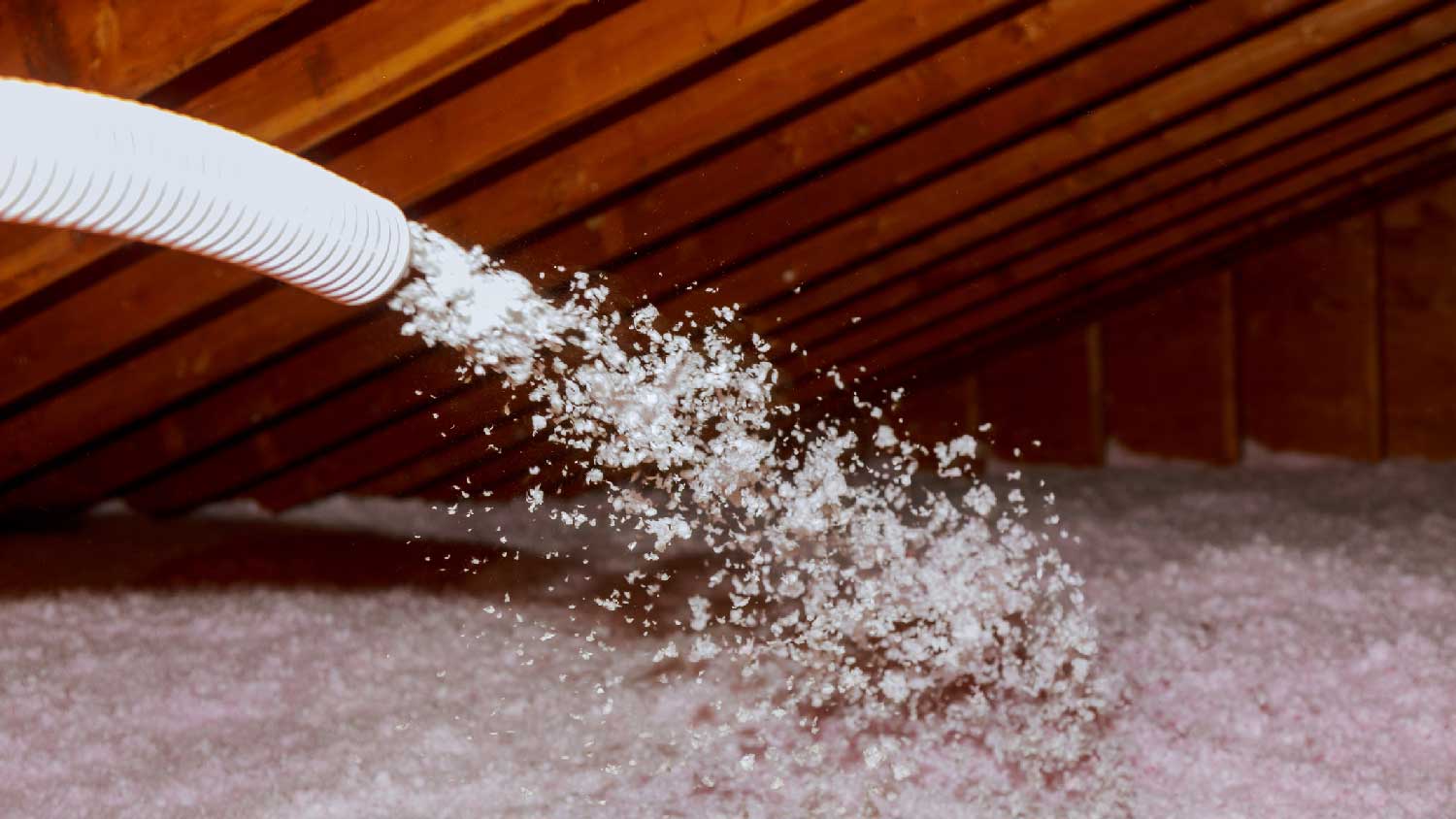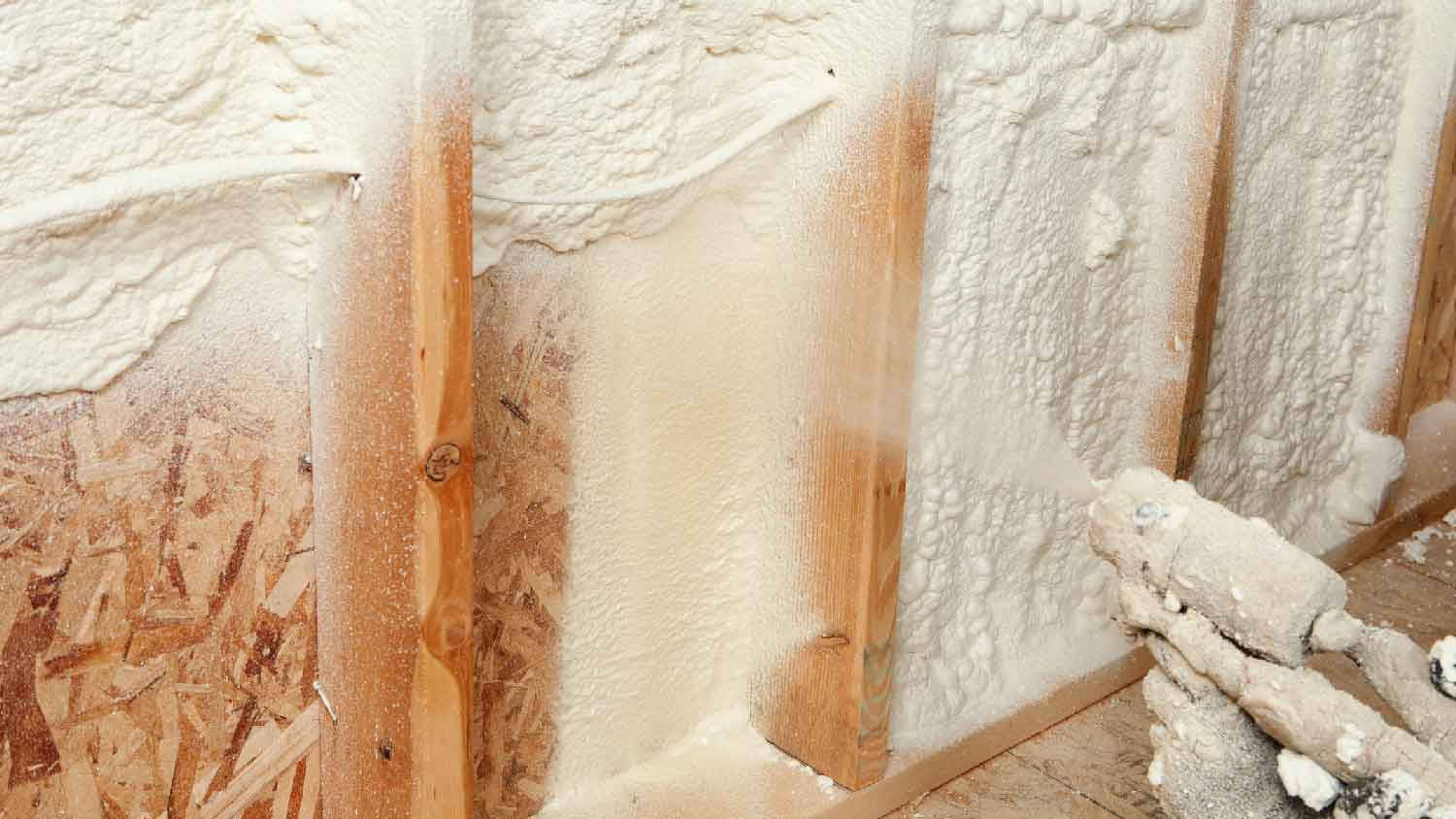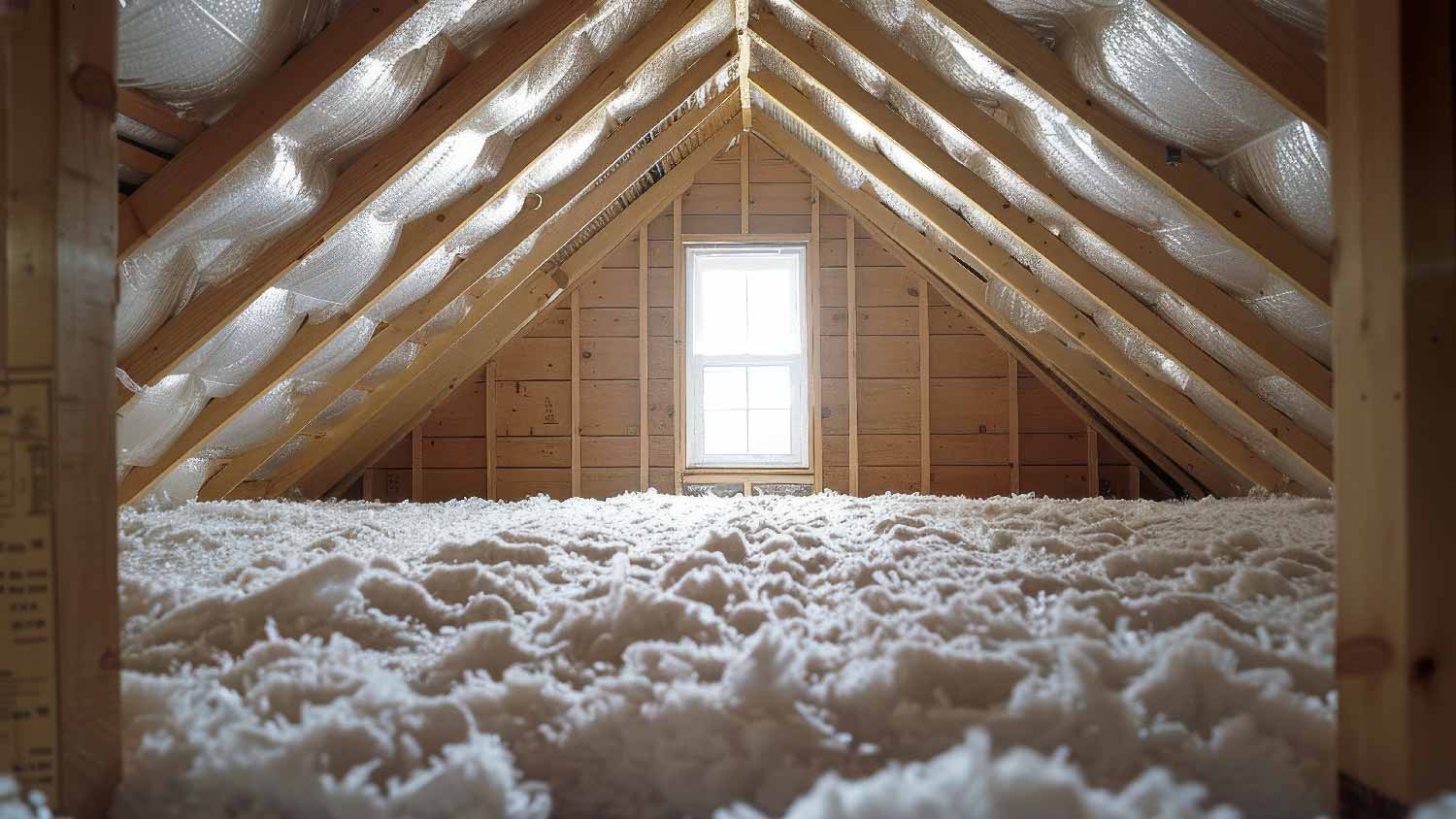
Trying to calculate how much spray foam insulation costs? Our in-depth guide breaks down pricing by type, amount, and where you install it.
Blown and foam sound similar, but the two couldn’t be more different


Blown-in insulation involves filling tight spaces with soft insulation materials.
Spray foam is a liquid polyurethane that swells and hardens to seal cracks and gaps.
You’ll pay less for blown-in but will get more energy savings with spray foam.
Homes of all shapes and sizes must be properly insulated to maintain comfortable temperatures no matter the weather outside. Blown-in and spray foam are among the two most popular types of insulation, but they have many differences, such as cost, life span, and ease of installation.
Knowing how these two options differ will help you decide which is best for your needs. This guide will help you learn which to pick and put an end to the debate between blown-in insulation versus spray foam once and for all.
| Blown-In Insulation | Spray Foam Insulation |
|---|---|
| Low-cost | More expensive |
| Easy Installation | Longer life span |
| Low durability | Difficult installation |
| Shorter life span | Better energy efficiency |
There’s a lot that sets these two insulation types apart, from how much they cost to how long they last. Blown-in insulation is less pricey than spray foam alternatives upfront, but spray foam offers better energy savings and a longer life span. Many insulation companies will use a combo of the two to get the money savings and durability benefits at once.

Blown-in insulation involves filling or blowing materials like cellulose, rock wool, or fiberglass into wall cavities, floors, and attics. This option is especially ideal for insulating tough-to-reach spots because both the blow-in method and soft substances used can easily be installed just about anywhere. But there are also a few downsides to consider before going all in on it.
| Blown-in Pros | Blown-in Cons |
|---|---|
| Cost-effective | Low durability |
| Easy Installation | Not moisture resistant |
| Flame retardant | Shorter life span |
Best for:
Installing insulation on a budget.
Those interested in DIYing insulation.
One of the biggest draws for blown-in insulation is its relative affordability. Blown-in insulation costs between $0.50 and $2.30 per square foot for materials. When you add up what you’d pay to hire an insulation company near you for installation, that comes out to roughly $600 to $1,200 to insulate a 1,000-square-foot space like an attic.
What’s more, there are fewer risks from DIYing with this option because the materials used don’t emit harmful VOCs—unlike spray foam. Some types, like fiberglass, are even fire-resistant.
Blown-in insulation falls short in two major categories: life expectancy and energy efficiency.
Most setups will last at least 30 to 40 years, but the materials used aren’t water resistant and may fail sooner if you live in an especially wet climate or your home has experienced leaks.
Similarly, blown-in insulation has a lower R-value, which rates how well it prevents heat from entering or exiting an abode. So, while it will cut energy costs on the grounds that it’s providing at least some insulation, it won’t do it as well as alternatives with higher R-values, like spray foam.

Spray foam insulation is a form of liquid polyurethane that expands to fill gaps and holes and hardens as it sets. Within this insulation type are two subcategories: closed and open cell. As the name indicates, closed-cell spray foam consists of cells that close off completely and become extremely stiff and rigid—and impermeable to water and air—as they dry. This gives it a higher R-value than open-cell spray foam, whose cells remain slightly open, giving it a more flexible, elastic quality.
| Spray Foam Pros | Spray Foam Cons |
|---|---|
| Longer life span | Expensive |
| Sound, water, and airproof | Difficult installation |
| Energy efficient | Flammable |
Best for:
Homeowners who never want to replace their insulation again.
Those looking to spend more upfront to save more down the line.
Spray foam might seem like the automatic choice based on its benefits alone. With a life span of 80 to 100 years, opting for it could mean the difference between semi-regular insulation replacements and never having to do it again.
Additionally, its solid structure makes for unmatched durability. Neither water nor air can penetrate this type of insulation, and especially rigid closed-cell options even block out sound. What’s more, it has an impressive R-value that ranges from 3.7 to 6.7, which will keep your home cool in summer, cozy and warm in winter, and lower your bills by up to 40% year-round.
Price is the most obvious downside to this option. Spray foam insulation costs range from $0.60 to $1.60 per square foot for open-cell varieties and $1.30 to $3.10 per square foot for closed-cell versions—and that’s just for materials. The cost of the whole project—completed by a pro—will be between $1,500 and $6,200 for a 1,000-square-foot space.
If you’d normally consider DIY to avoid labor costs, know that’s not recommended when installing spray foam insulation because of its toxicity. A pro will have the skills and equipment to safely handle the noxious fumes it produces. Once dried, spray foam insulation will no longer pollute your airspace, but it does remain among the more flammable materials used to insulate.

Now that you’re familiar with the differences between these two insulation types, let’s find out how they stack up against each other in the most relevant categories.
Spray foam is basically impervious to moisture, unlike blown-in insulation, which can become damaged from unexpected leaks.
Blown-in insulation may fall short in a number of ways, but price is definitely not one of them. Choosing this type will always save you more upfront.
While both options have decent R-values, spray foam consistently has a higher R-value. In general, the R-value for blown-in insulation ranges from 2.3 to 4.3, while spray foam starts at a whopping 3.7 and goes all the way up to 6.7.
Blown-in insulation is non-toxic and the method used to install it gets into tight, cramped spaces with ease, whereas installing spray foam is a complicated process that involves lots of protective equipment.
There’s just no beating the nearly century-long life span that you get from spray foam insulation.
Spray foam insulation offers an average of up to 40% reduction in energy bills, which is almost double the 25% savings you may get from blown-in alternatives.
Even though the energy-saving potential isn’t as great with blown-in insulation, the materials used (like cellulose) are often more eco-friendly and recyclable.
From average costs to expert advice, get all the answers you need to get your job done.

Trying to calculate how much spray foam insulation costs? Our in-depth guide breaks down pricing by type, amount, and where you install it.

Find out the average pipe insulation cost, including material and labor prices, plus tips to save money on your project.

Wool insulation offers a higher R-value than fiberglass but is more expensive. Use this guide to estimate wool insulation costs for your home.

Want to know how to fish wire through an insulated wall? We’ve got eight tips to make the job more approachable.

Remove blown-in insulation from your attic safely and efficiently by following this step-by-step guide and prep for your attic remodeling project.

If you are planning to add insulation to your home, you’re likely wondering: what R-value do I need? Our guide explains what you need to know to insulate your home properly.